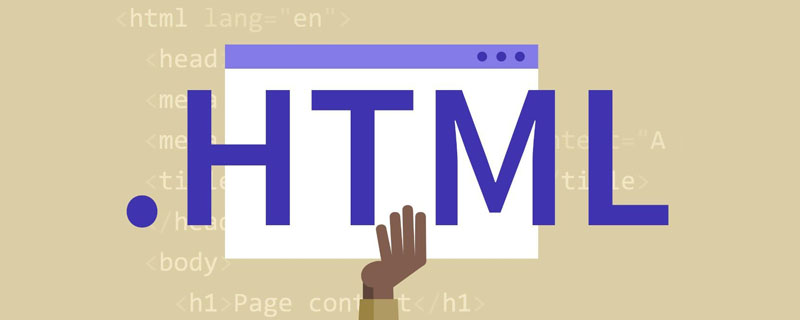This article mainly introduces the relevant information on the detailed explanation of HTML5 data-* custom attributes. The editor thinks it is quite good, so I will share it with you now and give it as a reference. Let’s follow the editor to take a look, I hope it can help everyone.
In jQuery's attr and prop, it is mentioned that improper use of property in versions before IE9 will cause memory leaks, and the difference between Attribute and Property is also a headache. In HTML5, data- * method to customize attributes. The so-called data-* is actually the data- prefix plus the customized attribute name. Data can be stored using such a structure. Using data-* can solve the current situation of confusing and unmanaged custom attributes.
Reading and writing methods
data-*There are two setting methods, you can write directly on the HTML element tag
<p id="test" data-age="24">
Click Here
</p>The data-age is a custom attribute. Of course, we can also operate it through JavaScript. Elements in HTML5 will have a dataset attribute, which is a collection of key-value pairs of the DOMStringMap type
var test = document.getElementById('test');
test.dataset.my = 'Byron';In this way, a custom attribute of data-my is added to p. There are two things to pay attention to when using JavaScript to operate dataset
1. We are here When adding or reading attributes, you need to remove the prefix data-*. Like the above example, we do not use the form test.dataset.data-my = 'Byron';.
2. If the attribute name also contains a hyphen (-), it needs to be converted to camel case naming. But if a selector is used in CSS, we need to use the hyphen format
as just now The code appends the content
<style type="text/css">
[data-birth-date]
{
background-color: #0f0;
width:100px;
margin:20px;
}
</style>test.dataset.birthDate = '19890615';
In this way, we set the data-birth-date custom attribute through JavaScript, and the CSS style sheet is p added some styles to see the effect


When reading, it is also through the dataset object, using "." to get the attributes. The data- prefix also needs to be removed, and the hyphens need to be converted into camel case naming
var test = document.getElementById('test');
test.dataset.my = 'Byron';
test.dataset.birthDate = '19890615';
test.onclick = function () {
alert(this.dataset.my + ' ' + this.dataset.age+' '+this.dataset.birthDate);
}
getAttribute/setAttribute
Some students may ask if there is any difference between this and getAttribute/setAttribute except naming. Let’s take a look
var test = document.getElementById('test');
test.dataset.birthDate = '19890615';
test.setAttribute('age', 25);
test.setAttribute('data-sex', 'male');
console.log(test.getAttribute('data-age')); //24
console.log(test.getAttribute('data-birth-date')); //19890516
console.log(test.dataset.age); //24
console.log(test.dataset.sex); //male

In this way we can see that both of them set attributes to attributes (nonsense, otherwise they can call them custom attributes), which means that getAttribute/setAttribute can operate on all dataset contents. The content of the dataset is only a subset of the attributes. The special thing is the naming, but there are only attributes with the data- prefix in the dataset (there is no age=25 one).
So why do we still use data-*? One of the biggest advantages is that we can manage all custom attributes in a unified manner in the dataset object. It is very convenient to traverse everything without going to zero. It’s scattered, so it’s still good to use.
Browser compatibility
The bad news is that the browser compatibility of data-* is very unoptimistic
Internet Explorer 11+
Chrome 8+
Firefox 6.0+
Opera 11.10 +
Safari 6+
Among them, IE11+ is simply blinding my friends. It seems that there is a long way to go to fully use this attribute. Xiu Yuan
Related recommendations:
What is the data-* custom attribute of HTML5
How to obtain it in H5 and setting custom properties
Detailed explanation of object model code for JavaScript custom properties and methods
The above is the detailed content of HTML5 data-* custom attribute example sharing. For more information, please follow other related articles on the PHP Chinese website!
 html5的div一行可以放两个吗Apr 25, 2022 pm 05:32 PM
html5的div一行可以放两个吗Apr 25, 2022 pm 05:32 PMhtml5的div元素默认一行不可以放两个。div是一个块级元素,一个元素会独占一行,两个div默认无法在同一行显示;但可以通过给div元素添加“display:inline;”样式,将其转为行内元素,就可以实现多个div在同一行显示了。
 html5中列表和表格的区别是什么Apr 28, 2022 pm 01:58 PM
html5中列表和表格的区别是什么Apr 28, 2022 pm 01:58 PMhtml5中列表和表格的区别:1、表格主要是用于显示数据的,而列表主要是用于给数据进行布局;2、表格是使用table标签配合tr、td、th等标签进行定义的,列表是利用li标签配合ol、ul等标签进行定义的。
 html5怎么让头和尾固定不动Apr 25, 2022 pm 02:30 PM
html5怎么让头和尾固定不动Apr 25, 2022 pm 02:30 PM固定方法:1、使用header标签定义文档头部内容,并添加“position:fixed;top:0;”样式让其固定不动;2、使用footer标签定义尾部内容,并添加“position: fixed;bottom: 0;”样式让其固定不动。
 HTML5中画布标签是什么May 18, 2022 pm 04:55 PM
HTML5中画布标签是什么May 18, 2022 pm 04:55 PMHTML5中画布标签是“<canvas>”。canvas标签用于图形的绘制,它只是一个矩形的图形容器,绘制图形必须通过脚本(通常是JavaScript)来完成;开发者可利用多种js方法来在canvas中绘制路径、盒、圆、字符以及添加图像等。
 html5中不支持的标签有哪些Mar 17, 2022 pm 05:43 PM
html5中不支持的标签有哪些Mar 17, 2022 pm 05:43 PMhtml5中不支持的标签有:1、acronym,用于定义首字母缩写,可用abbr替代;2、basefont,可利用css样式替代;3、applet,可用object替代;4、dir,定义目录列表,可用ul替代;5、big,定义大号文本等等。
 html5废弃了哪个列表标签Jun 01, 2022 pm 06:32 PM
html5废弃了哪个列表标签Jun 01, 2022 pm 06:32 PMhtml5废弃了dir列表标签。dir标签被用来定义目录列表,一般和li标签配合使用,在dir标签对中通过li标签来设置列表项,语法“<dir><li>列表项值</li>...</dir>”。HTML5已经不支持dir,可使用ul标签取代。
 Html5怎么取消td边框May 18, 2022 pm 06:57 PM
Html5怎么取消td边框May 18, 2022 pm 06:57 PM3种取消方法:1、给td元素添加“border:none”无边框样式即可,语法“td{border:none}”。2、给td元素添加“border:0”样式,语法“td{border:0;}”,将td边框的宽度设置为0即可。3、给td元素添加“border:transparent”样式,语法“td{border:transparent;}”,将td边框的颜色设置为透明即可。
 html5是什么意思Apr 26, 2021 pm 03:02 PM
html5是什么意思Apr 26, 2021 pm 03:02 PMhtml5是指超文本标记语言(HTML)的第五次重大修改,即第5代HTML。HTML5是Web中核心语言HTML的规范,用户使用任何手段进行网页浏览时看到的内容原本都是HTML格式的,在浏览器中通过一些技术处理将其转换成为了可识别的信息。HTML5由不同的技术构成,其在互联网中得到了非常广泛的应用,提供更多增强网络应用的标准机。


Hot AI Tools

Undresser.AI Undress
AI-powered app for creating realistic nude photos

AI Clothes Remover
Online AI tool for removing clothes from photos.

Undress AI Tool
Undress images for free

Clothoff.io
AI clothes remover

AI Hentai Generator
Generate AI Hentai for free.

Hot Article

Hot Tools

VSCode Windows 64-bit Download
A free and powerful IDE editor launched by Microsoft

SublimeText3 Mac version
God-level code editing software (SublimeText3)

Zend Studio 13.0.1
Powerful PHP integrated development environment

mPDF
mPDF is a PHP library that can generate PDF files from UTF-8 encoded HTML. The original author, Ian Back, wrote mPDF to output PDF files "on the fly" from his website and handle different languages. It is slower than original scripts like HTML2FPDF and produces larger files when using Unicode fonts, but supports CSS styles etc. and has a lot of enhancements. Supports almost all languages, including RTL (Arabic and Hebrew) and CJK (Chinese, Japanese and Korean). Supports nested block-level elements (such as P, DIV),

SAP NetWeaver Server Adapter for Eclipse
Integrate Eclipse with SAP NetWeaver application server.






